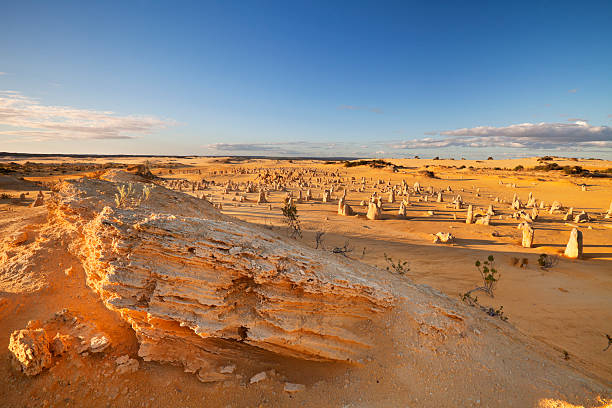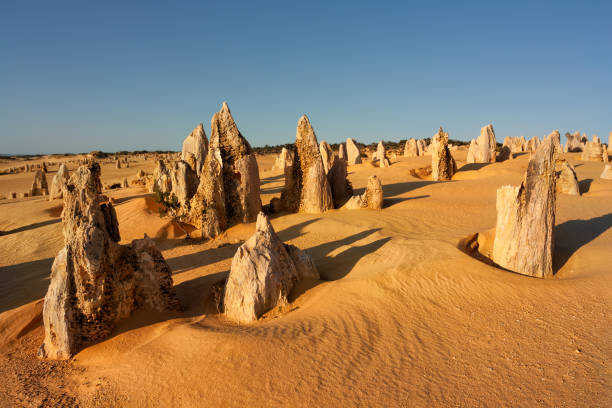Pinnacles Desert, Australia
The Pinnacles Desert is made up of thousands of spooky limestone pillars up to 4m tall. The pillars growing out of the harsh desert environment of yellow quartz sand create the moonscape picture. It is a popular photographic subject. The Pinnacles Desert, which was almost unknown to the general public until the late 1960s, is now part of the Nambung National Park. The Pinnacles Desert was added to the Nambung River National Park, which was already there. In the local Aboriginal tribe language, Nambung means crooked. It is a park with a 26-kilometer stretch of gleaming coastline surrounded by undulating old sand dunes that extend inland into banksia forests.
The Nambung River is lined with beautiful red river gum trees until it vanishes into limestone caverns. Massive sand dune fields characterize the Pinnacles Desert region along the shore. The Pinnacles' limestone structures vary in size and shape; some are as little as a mouse, while several are as tall as 3.5m. These oddly formed rocks have been compared to tombstones, termite mounds, and even human digits. The Pinnacles Desert is best viewed at sunrise or sunset, when it casts long, weird shadows across the rippling yellow sand dunes. Although the desert is teeming with species, the majority of it is nocturnal. However, it is not uncommon to see western grey kangaroos, emus and many sorts of reptiles and birds like black-shouldered kites hanging around the strange stones.
There is just one 27-kilometer-long access route into the Pinnacles Desert. Visitors should confirm that their insurance allows them to drive on unpaved roads. Visitors are urged to explore the Pinnacles desert, or to take a two or three hour hike to the Red, White, and Painted Colored Deserts. If you opt to make the walk, bring at least a litre of water for each person and a compass for the lunar-like scenery. Beach and picnic places may be reached by numerous exits from the main access road.

















